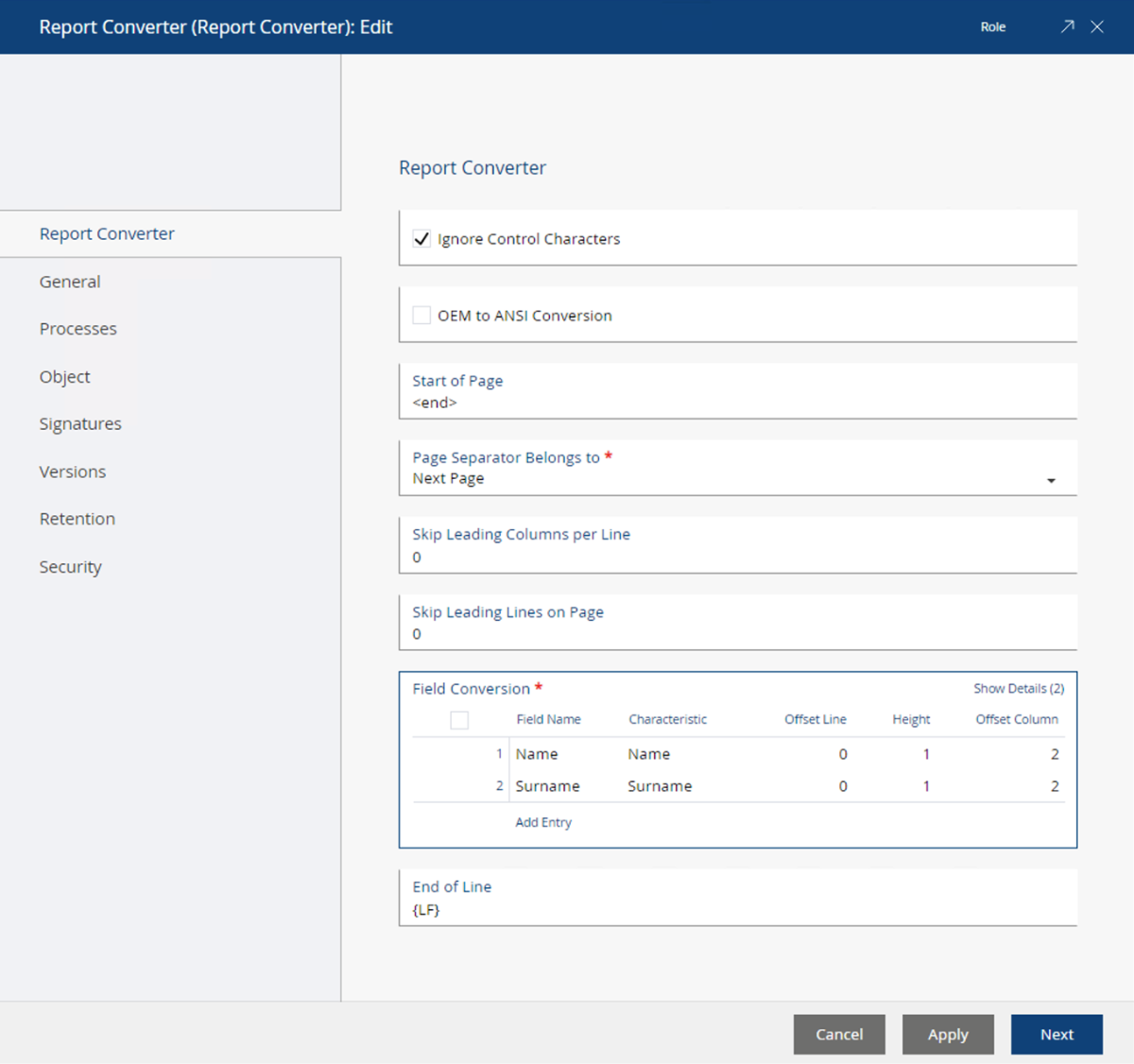Definition of Data Sources
Fabasoft Folio/COLD offers several ways to specify the access to data sources.
ODBC
ODBC (Open Database Connectivity) is a standardized method developed by Microsoft that allows access to data sources, regardless of the application that manages the data. Appropriate drivers are available for a variety of applications.
Examples of data sources:
- Database Systems
- CSV files (Character Separated Values)
- Excel spreadsheets
The data source must be defined as a file data source or a system data source using operating system tools.
- Click “Start” > “Administrative Tools” > “Data Sources (ODBC)”.
- Use the “System DSN” tab and the “File DSN” tab to define data sources.
Note:
- File data sources are specified by DSN files and system data sources can be entered into the registry (under HKEY_LOCAL_MACHINE\SOFTWARE\ODBC\ODBC.INI).
- If the project-specific situation permits, OLE DB should be used instead of ODBC.
OLE DB
OLE DB (Object Linking and Embedding Database) is a collection of interfaces developed by Microsoft that provides access to a variety of data sources. Compared to ODBC, it is a newer technology with better support.
Examples of data sources:
- Microsoft SQL Server
- Oracle Database
- Microsoft Office Access
Fabasoft Folio/COLD is an OLE DB consumer and therefore can import data that is provided by an OLE DB provider.
As part of Fabasoft Folio/COLD also an OLE DB provider for the Microsoft Windows file system is installed ("FileProvider OLE DB Provider"). This can be used to read directory structures and files from the file system and to generate Fabasoft Folio objects (see chapter "The Fabasoft Folio/COLD File System Import").
Report Converter
Configuration objects of the object class Report Converter (also available as a component object) can be used to read and split print files (such as from mainframe systems) and host export files, and to pass them to the data import mechanism. The files to be read must be available as text files. The maximum field size should not exceed 1 MB.
Each record is handled as one page. The Start of Page has to be defined, as well as the position and length of the fields (Field Conversion).
Example for a Report Converter:
This report converter can read the following TXT file:
<end>
Name: Otto
Surname: Maler
<end>
Name: Karin
Surname: Winkler
Script
The data to be imported are handed to Fabasoft Folio/COLD using scripts. This possibility can be used for generating test data and for integration of data sources that can be addressed by scripts. An example for such a data source is XML.
The following features are defined:
- Init(Table)
Initialize the data source. The content of the Table property of the Data Import object (see chapter “Configuration of the Data Import”) is passed as parameter. - Skip(Rows)
Optionally. Skips the number of records defined in Rows. - GetHeader(ColumnNames)
The names of the columns have to be returned as string array. - GetRecord(Values, IsValid)
For each call of GetRecord, in the Values parameter a string array with the values of a record has to be returned. If there are no records left, IsValid has to be set to False otherwise it has to be True. - Terminate()
Optionally. This function is called after reading the last record. In this case e.g. locked objects can be shared again.
LDAP
LDAP is a network protocol used in directory services. It mediates communication between the LDAP client and the directory (Directory Server). From such a directory, object-related data (e.g. personal data) is read. The communication takes place query-based.
Examples for data sources:
- OpenLDAP Directory
- Active Directory
ADE-DB
ADE-DB is the name for the database connectivity developed by Fabasoft. It can be used to import data of database systems that can be used for Fabasoft Folio services as well.
Examples for data sources:
- Microsoft SQL Server
- Oracle
- PostgreSQL
Spreadsheet Document
Spreadsheet Documents working with Fabasoft Folio COLD Loader are CSV, Microsoft Excel or LibreOffice Calc documents.
A CSV file is a text file for storage or exchange of simply structured data. CSV stands for ”Character Separated Values“.
The first line of the file contains the column names. The separator for the Fabasoft Folio COLD Loader is the semicolon by default. If a semicolon should be contained in the values, the whole value needs a double quote. The used separator can be configured by means of the data source.
The CSV file can be ANSI or UTF-8 format.
XML
XML files are text files for storage or exchange of hierarchically structured data.
Column names can be defined in a syntax similar to XPath (e.g. “address/nr“).
Fabasoft Folio COLD Loader supports the following variants of column names:
- relatively, e.g. ”person/name“
- globally, e.g. “//artnr“
- attributes, e.g. “contactdata/person@id“ (in this case ”id“ is an attribute of the element “person“)
Additionally in the Table property of the Data Import object (see chapter “Configuration of the Data Import”) the path to the desired element can be defined (e.g. “/staff/contactdata/person“).
File System
Using the datasource “File System” files from the file system or from a ZIP file can be imported.
